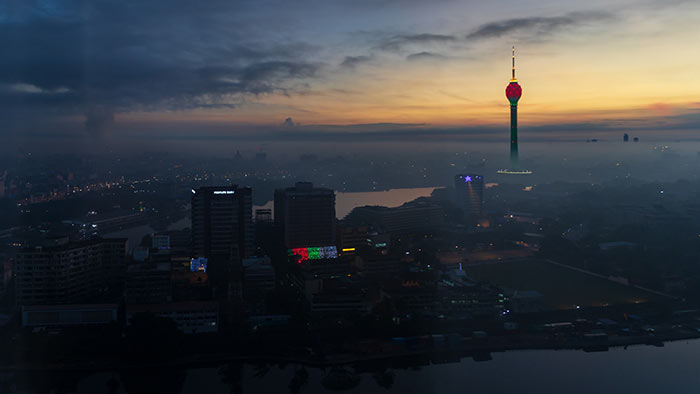Sri Lanka Holds Rates After Bank Cash Ratio Cut for Growth

Photo credits: unsplash
Sri Lanka stood pat on borrowing costs for the first time in three meetings, after slashing the cash ratio for banks to bolster domestic liquidity and growth.
The Central Bank of Sri Lanka kept the standing lending facility rate at 12%, according to a statement on its website on Thursday. Only one of the six economists surveyed by Bloomberg had forecast a hold while the rest predicted cuts ranging from 100-200 basis points.
“The board arrived at this decision following a careful analysis of current and expected developments in the domestic as well as the global economy, while noting the significant easing of monetary conditions effected since June 2023.,” the central bank said.
The policy hold comes as inflation reaches single digits for the first time in 20 months. Weaker prices have allowed policymakers to slash the benchmark rate by 450 basis points so far this year to jumpstart growth. Earlier this month, the central bank also reduced the statutory reserve requirement by 200 basis points to 2% to ensure a faster reduction of market lending rates.
The monetary authority said it was allowing space for further adjustment of market interest rates, noting that “certain lending products remain excessive and are not in line with the current monetary policy stance.”
The rate setting board decided to adopt “targeted administrative measures” to reduce specific lending interest rates that it considered to be excessive. It also directed banks to reduce overall rupee lending interest rates “by an appropriate margin in the period ahead.”
Increased inflows from tourism and remittances, together with an International Monetary Fund bailout, has stoked optimism for Sri Lanka’s recovery. Ahead of the first review of its $3 billion loan program next month, authorities are pushing a debt restructuring plan.
Stable rates will support the Sri Lankan rupee that’s weakened about 5% since June after the lifting of import restrictions. The country’s rate setters are likely to look at the impact of the ongoing drought on crops and livestock on inflation and policy.
(Bloomberg)
Latest Headlines in Sri Lanka
- Former CPC Chairman Dhammika Ranatunga granted bail by Colombo Court December 15, 2025
- Sri Lanka condemns Bondi Beach attack in Australia December 15, 2025
- Sri Lanka estimates USD 400 Million for railway reconstruction after Cyclone Ditwah December 15, 2025
- Large-scale drug trafficker arrested in Wattala with 21 kg of cannabis December 15, 2025
- Tragedy at Bondi Beach: Mass shooting at Jewish festival kills 15, injures dozens December 15, 2025


